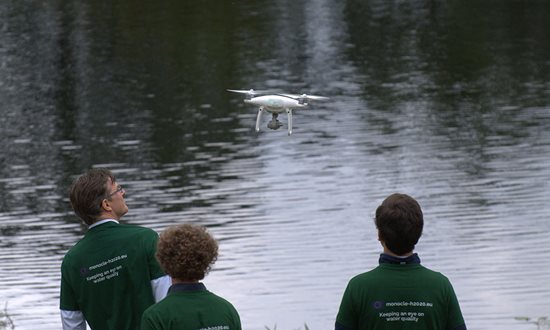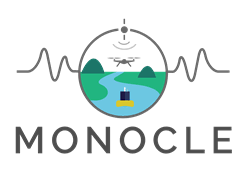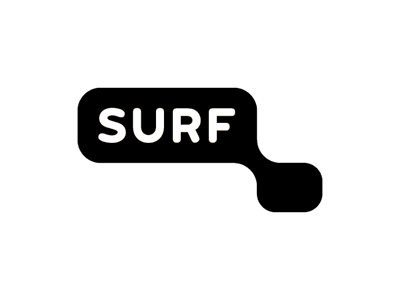With all eyes on reducing our carbon footprint, uncovering the mystery behind global warming and monitoring our environment for clues on how best to preserve it, our ability to observe and effectively monitor inland and transitional waterways remains a challenge.
The EU H2020 MONOCLE project is bringing together 12 partners from across Europe to create sustainable in situ observation solutions for Earth Observation in these aquatic ecosystems. These inland bodies of water are important economically and are crucial to sustainable food, energy, and clean water supply. Yet they are particularly vulnerable to direct human impact. The link between operational earth observation centres and current sensors in these waterways remains the weakest link in earth observation. The MONOCLE sensor system aims to bridge this gap with a sensor and network links to enable better observation and research.
Measuring Up to the Challenge
The MONOCLE project addresses and strengthens current earth observation methodologies by adding a dimension of crucial reference measurements that remove – and correct for – major sources of error in satellite observation results. This includes the measurable observation of water-leaving radiance and atmospheric transmission properties. These, and other novel high-frequency measurements of in-water biogeochemical and physical parameters, are of direct interest in environmental monitoring. These will be further enhanced via advanced signal processing that can enable drift detection, signal coherence, removal of surface effects and more. In addition, the project is innovating sensor technologies, especially where current sensors are either prohibitively costly for wide-scale deployment or are unsuitable for optically complex inland and coastal waterway environments. MONOCLE is bringing these pillars together in a self-calibrating network that encompasses fixed-position instrumentation with traceable calibration, unmanned platforms for spatial assessment, and smartphones.
Smartphones?!
Yes indeed! Mobile platforms in the hands of local citizens, known as “Citizen Science”, is a cornerstone of the MONOCLE project. Citizen science involves research collaboration between scientists and volunteer communities to develop scientific understanding and encourage engagement. By using a wider range of devices and techniques, including local citizens’ own devices, social media and novel applications citizens can easily engage in scientific endeavours and provide much needed data to researchers.
The MONOCLE project leverages citizen science to gather robust data to generate environmental information by developing and using existing citizen science tools to expand the in situ monitoring programme. Researchers from the University of Leiden in the Netherlands are spearheading these aspects of the project. These researchers, working with Earthwatch Europe, are enhancing the role citizens play in monitoring water quality parameters for large rivers, lakes, reservoirs, estuaries, bays and other coastal zones around the world including, and in particular, data poor regions.
Dr. Frans Snik developed iSPEX, a low-cost, mass producible add-on for smartphones with a corresponding app that had previously been used to measure air quality across Europe. Within the MONOCLE project, the iSPEX team extended to water quality measurements, working with Prof. Martina Vijver and PhD-candidate Olivier Burggraaff of Leiden University. The idea is to upgrade the add-on and sensor capabilities to monitor air and water quality properties using spectropolarimetric information. The first prototypes of the developed optical instrumentation are now printed on a 3D-printer, and made fit for virtually every type of smartphone.
According to Prof. Vijver, the importance of citizen science cannot be emphasised enough. “Locals understand their environment and can access it so much more easily than anyone else. They are true stakeholders who bring insights, based on the data collected that affects future policy.”
High Capacity Networking Powers Citizen Science
When it comes to examining the true extent of a problem like this, extensive data collection covering a large geographical area is needed. Harnessing the power of citizen science gives scientists the opportunity to gather more data than they ever could alone. But to do it well, they need the power of high speed, low-latency networks to gather the data and process it in real-time.
Since citizen science is a relatively new phenomenon, there is not a lot of research and only a guidelines that are available. These focus mostly on the volunteers’ experiences and motivation. Some studies have focused on the researchers’ perspective involved in citizen science projects through interviews (see e.g. Cigliano et al., 2015; Golumbic et al., 2017; Roy et al., 2012). Lessons learned by the coordinating researchers in citizen science projects are just beginning to be covered. Leidin University researcher Rambonnet’s paper outlining best practices and challenges for citizen science projects on plastics in aquatic environments is an important start in this area.









